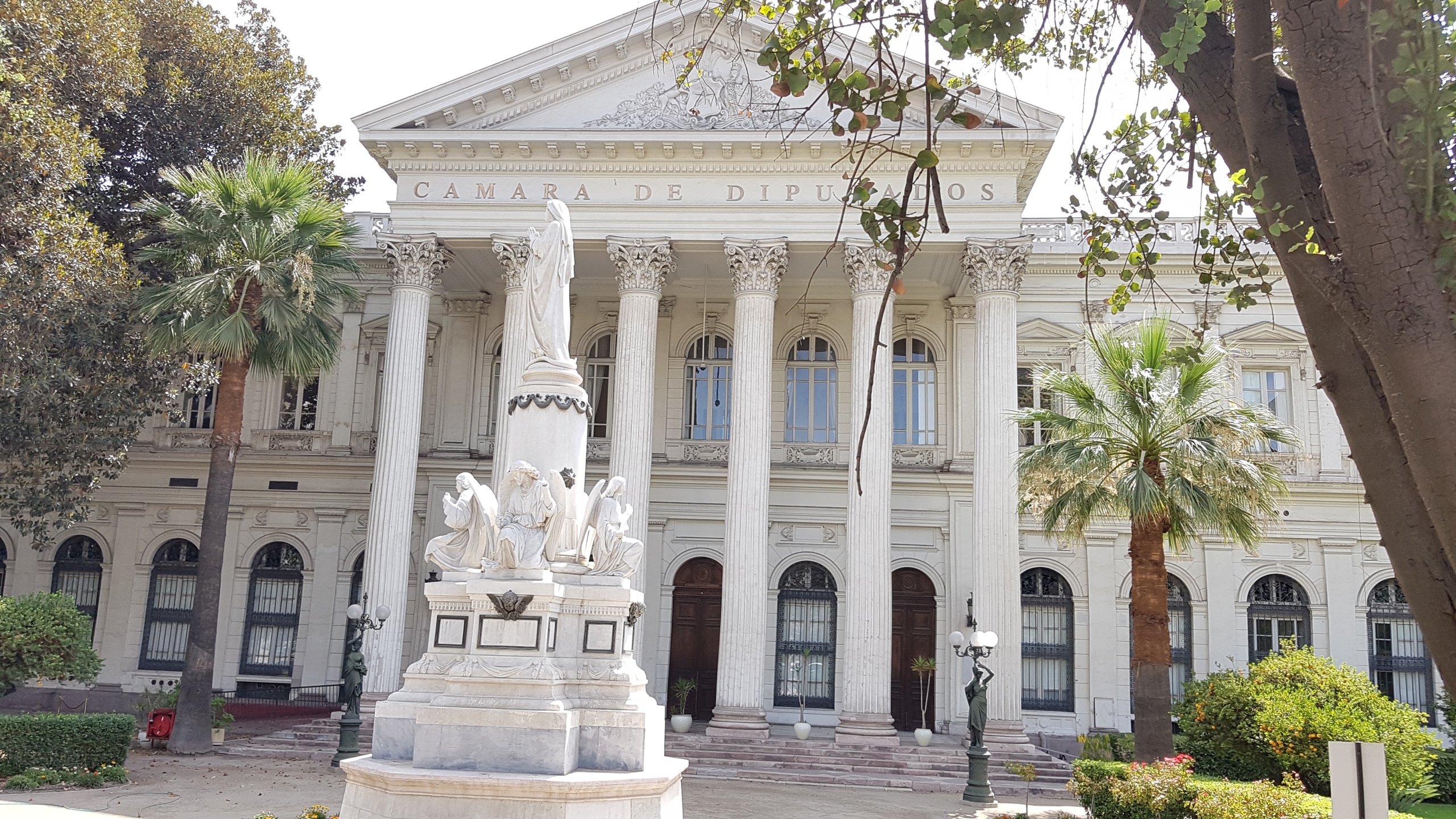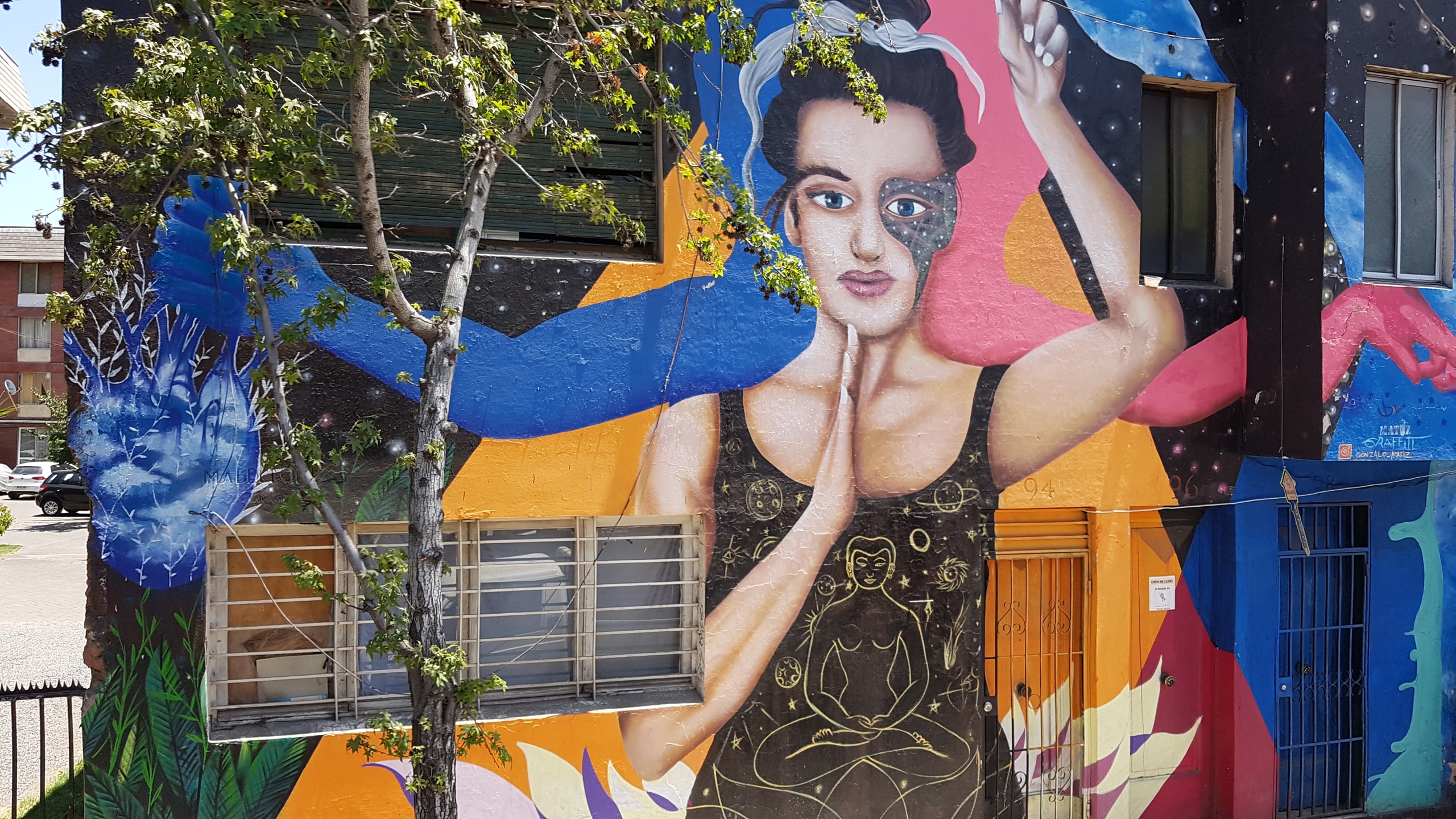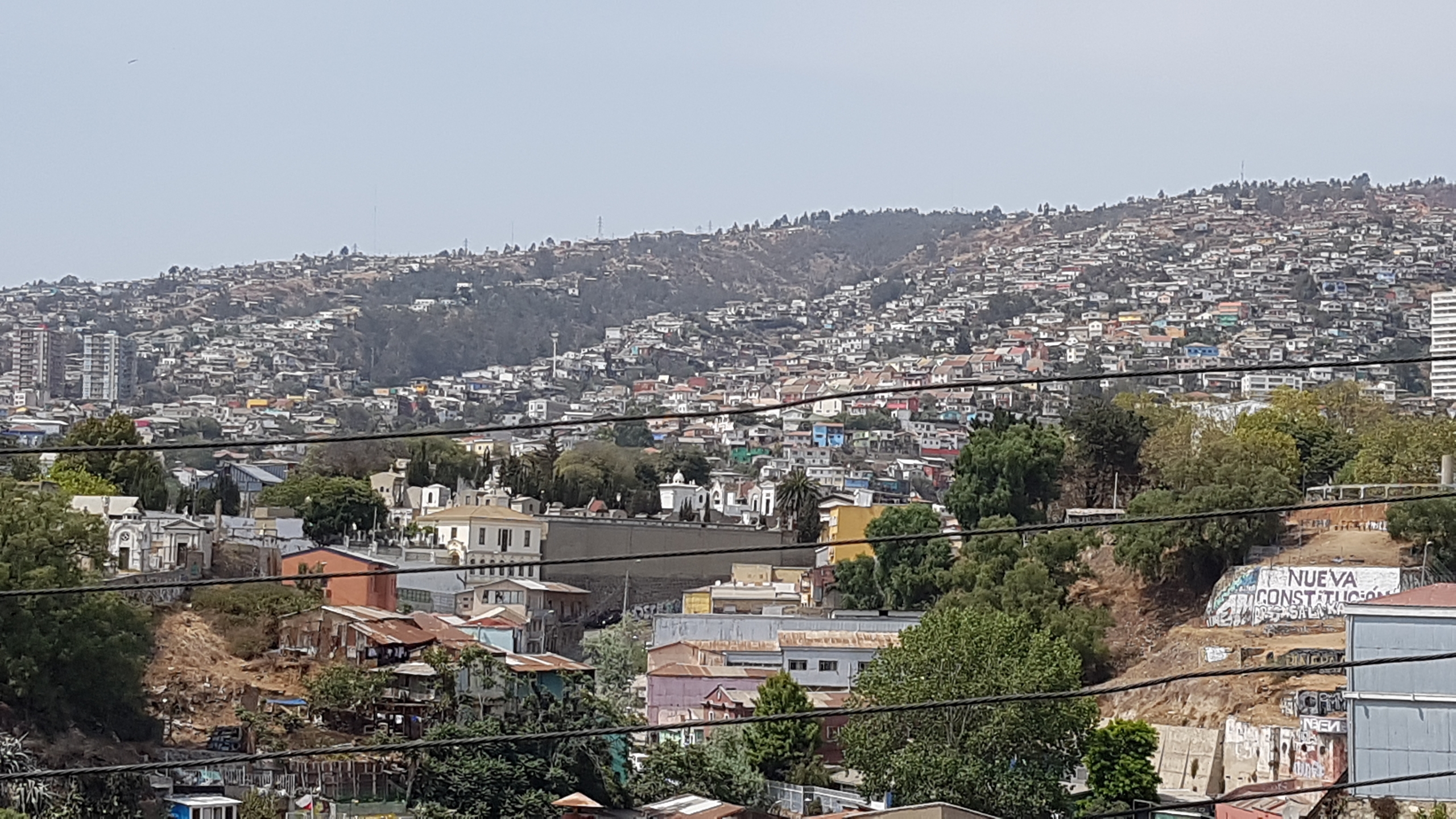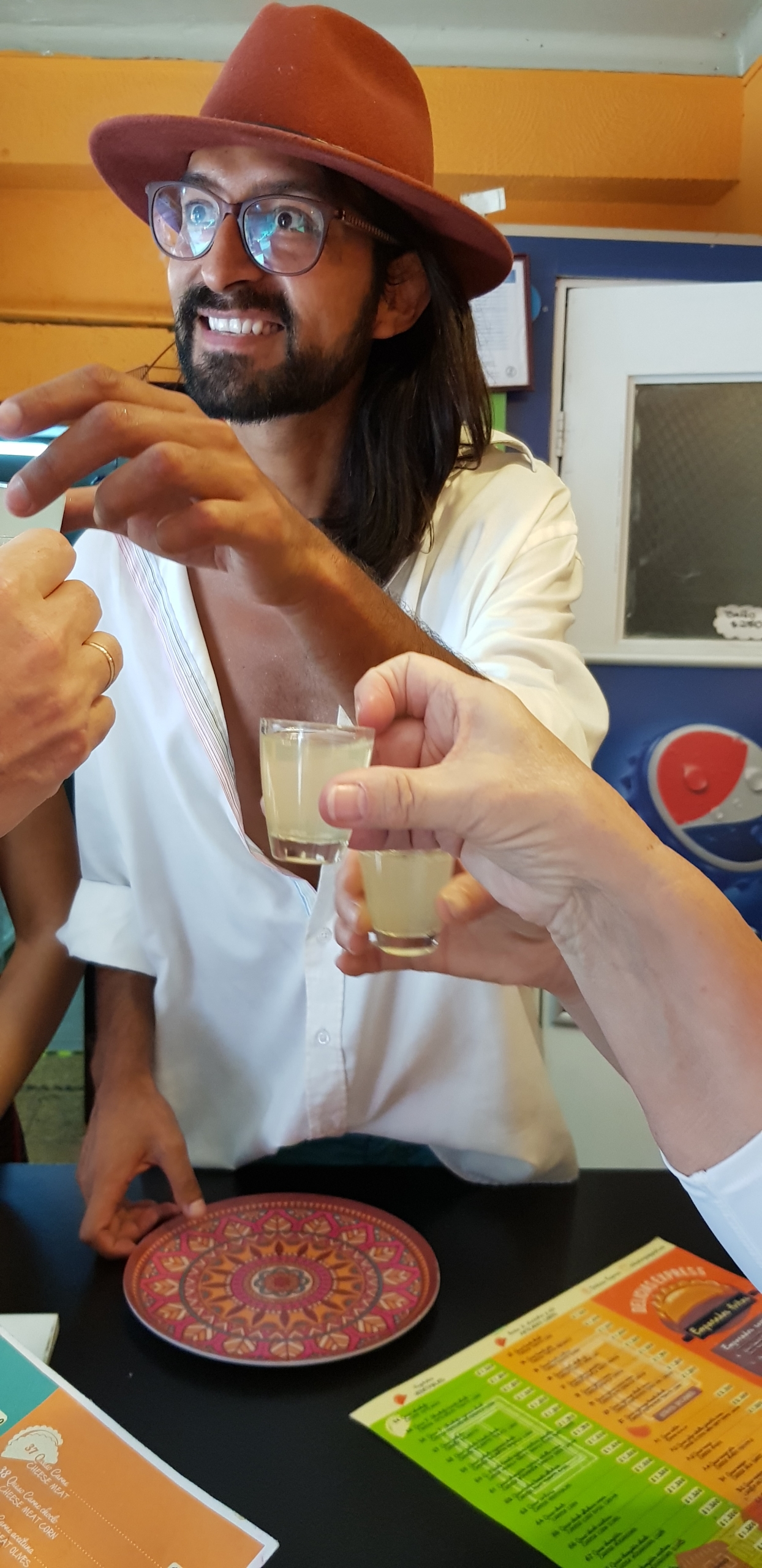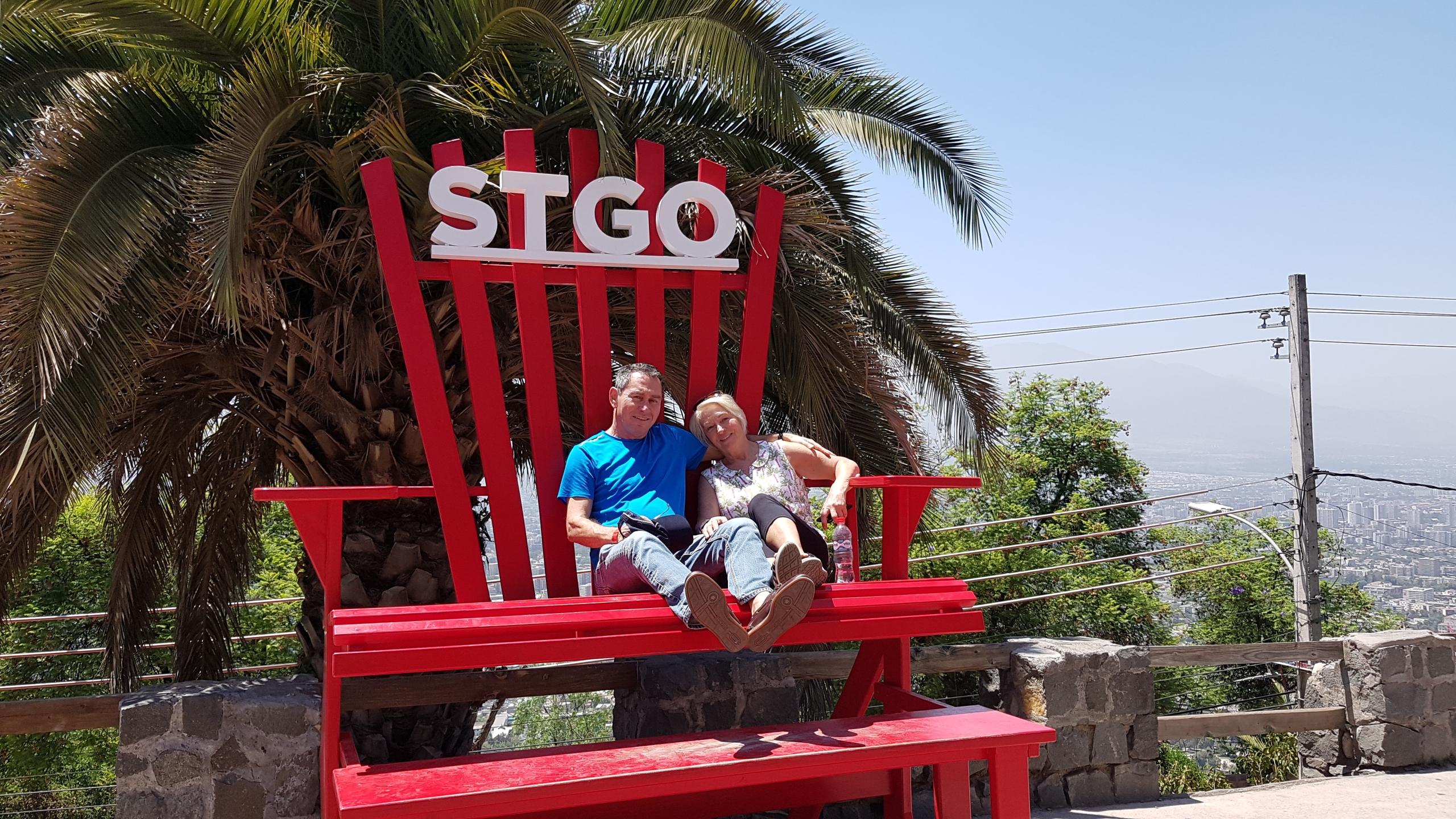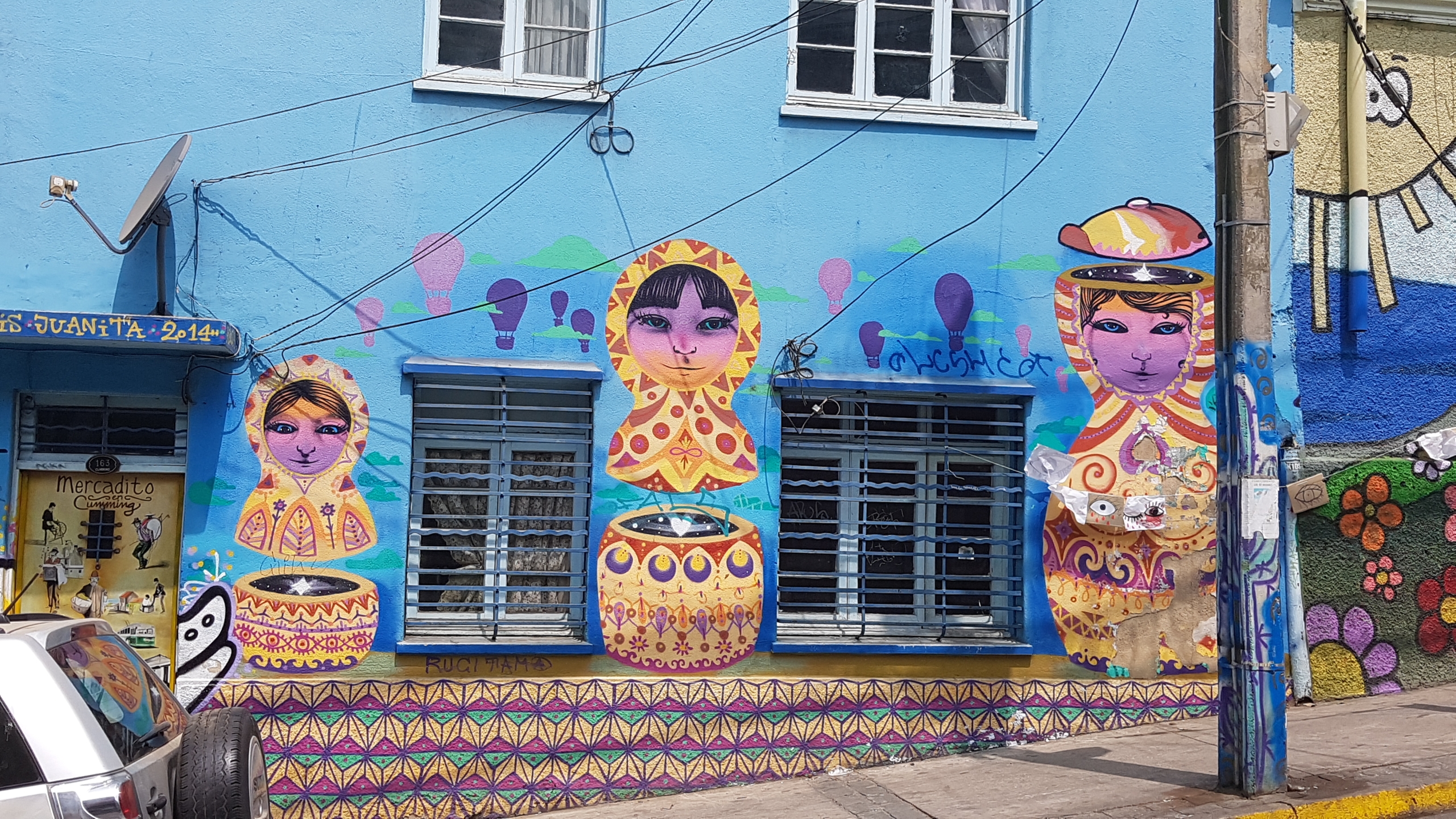After a long but pleasant flight with stopover and overnight stay in Buenos Aires we landed on January 12, 2020 in Santiago de Chile. It was new territory for both of us: Andre was alone in South Chile in 2012 but he was not in Santiago.
And the first impression of Santiago was somewhat contradictory. We arrived on a Sunday and went to the Plaza de Armas, the main square. In the beautiful park there were many people walking.
Suddenly we hear loud calls from close up and see police riding in the middle of the crowd. We were warned that there would be social unrest, but not that we would encounter it in the first hours of our stay in Santiago. I will come back to the reason for the unrest later. Half an hour later the demo had dissolved and a peaceful dance competition took place in the middle of the square.
Next day we did the obligatory hop on hop off tour: Cathedral, Main Post Office, Parliament, Theatre, Mercado Principal.
In the upper part of the city, the Barrio Alto, the skyscrapers sprout: office towers, wide, modern streets, malls and apartment skyscrapers. Barrio Alto has reminded us of the new business district of Puerto Maduro in buenos aires. In the whole city a lot of people on the street but hardly Spanish speaking tourists.
In the upper part of the city, the Barrio Alto, the skyscrapers sprout: office towers, wide, modern streets, malls and apartment skyscrapers. Barrio Alto has reminded us of the new business district of Puerto Maduro in buenos aires. In the whole city a lot of people on the street but hardly Spanish speaking tourists.
Our next destination in Santiago was the Cerro san Cristobal, a peak within the urban area. From the top you have a breathtaking view over the whole of Santiago to the snowy Andean peaks.
On the summit was a very nice atmosphere caused by the church music from the speakers and the high statue of the Virgen de la Inmaculata Concepcion. The inscription says: ‘ Virgin Mary, bring us your Son closer ‘.
We sat down on a bench and enjoyed the peaceful atmosphere.
During a walk through the city center we saw the Palacio de la Moneda, the Chilean presidential office. The building has a sad past and was bombed by the Air Force during the coup by General Pinochet against the then President Allende. Below the Palacio de la Moneda is the newly built cultural center centro Cultural Palacio La Moneda. The cultural centre is completely built underground and is supplied with daylight by a large glass roof.
Interesting to see: young people who regulate the traffic at crossroads without traffic lights and get a tip from the drivers.
The effects of the social unrest have accompanied us throughout our journey through Chile. The people demanded a new constitution to eliminate social inequalities and the government under President Pinera had the army shoot at the demonstrators. However, there were also many looting by the demonstrators.
The result was very clear in Santiago: beacuse of fear of demonstrations and looting, almost all shop windows and banks in the city centre were closed. You might have thought that the shops were closed, but you could enter through a small mostly hidden door on the side. Grafitti on a large number of buildings demanded the removal and punishment of President Pinera.
The referendum for the new constitution took place after our departure in October 2020. The motion for a new constitution was adopted by a large majority and the new constitution will be drafted by 2022.
We liked the many artistically painted facades very much.
In our travel guide it was written “Santiago is not a city to fall in love with.” We agree. Due to this statement, our expectations were low and we were not so strongly disappointed.
On 16th of January we took the bus to Valparaiso, which is called Valpo by all.
Valpo is built on several Ceros (hills) on which one can ascend with ascensores (lifts) and is full of labyrinths of winding alleys and steep stairs. Valpo is said to have the best street art in Latin America. We loved walking on the Ceros and enjoyed the view and photographed the pretty colorful houses.
The areas below “at sea level” are quite degenerate and very noisy due to heavy traffic and have no appeal at all. We stopped there and as little as possible. As in hardly any other city, the inhabitants of valpo define themselves according to the quarter in which they live. The most emblematic building is in Plaza Sotomayor with the Edificio Armada de Chile.
The hill on which our very familiar hotel was located was cero Consitution. The Ascensor (funicular) from 1883 was interesting and somewhat nostalgic. The cabin in mahogany wood looks a bit old, but is absolutely safe and helps to cope with the differences in height quickly. We participated in a guided walking tour. The guide told us very interesting aspects of everyday Chilean life and also explained the background of the social unrest. The houses are supposedly so colorful that earlier when the sailors came home drunk at night easier found their house.
The painted hostages with a bleeding eye are a protest against the policemen who shot the demonstrator in the eye. And this was our guide.
After three days in Valpo we took the bus back to Santiago and from there we flew to Punta Arenas, the southernmost point of our trip.





